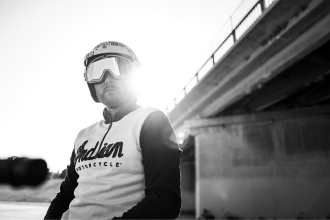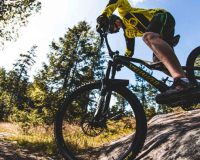Winters are here. Apart from enjoying lip-smacking food, winters present a great opportunity for exercise. Regarding exercise, outdoor exercises are a great way to burn calories. Out of the many options for outdoor exercises, cycling is among the best ones to undertake. Taking your cycles out in this beautiful weather is a thrilling experience.
Riding MTB bikes in snow-clad mountains gives you the adrenaline pump. The fresh winter air can make riding fun and enjoyable. The quiet trails and serene atmosphere make for calm and peaceful rides. As the saying goes, “The journey matters as much as the destination.” However, riding in this chilly weather comes with its own share of risk.
You can follow these tips to make your riding experience an enjoyable one.
Can Read More:
- 8 Useful Benefits of Mountain Biking
- 7 Benefits of Cycling in the Rain
- Mountain Bike Training Plan
- Mountain Biking Must Adventure in 2024
- Mountain Bike Riding’s Benefits
1. Invest in Good Winter Biking Gear
It’s easy to get hot and sweaty when you’re riding your bike, even in winter. Wear lots of thin layers rather than wearing big puffer jackets. You can pull multiple layers of clothing on and off according to the weather.
Keeping your head and hands warm will transform your winter ride. Wear waterproof gloves and a hat. Your hands will be sufficiently protected by a thick pair of ski winter gloves, but before you go, make sure you can still shift gears, brake, and grasp the handlebars safely.
The same holds true for your skull. While riding a bike, wearing a well-fitting hat or a headband made of yarn should be comfortable, but it should not interfere with your eyesight or hearing.
2. Ride with Caution
You must be mindful that winter roads can become quite slippery under certain circumstances. Purchase a bicycle with a strong grip; to prevent you from skidding and hurting yourself, every tire on the bike should have a good grip on the road. Rain and sleet don’t play around. For extra traction this season, try inflating your tires a little lower. During this season, you run the risk of your feet slipping off the wet pedals. Invest in some non-slip shoes or pedals with an extra bit of traction.
Moreover, while riding in foggy conditions, rear bike lights are a lifesaver, allowing the traffic behind to spot you. It is especially useful while riding on main roads with heavy vehicles, which are faster and heavier.
3. Keep your MTB Bike in Pristine Condition
It’s a good idea to thoroughly wash your bike after riding in bad weather. Give it a general rinse and wipe down to remove dirt, salt, and grit. Corrosion can be a big problem which results from winter grime and moisture. It is best to regularly clean and dry your bike to prevent it. In addition, you can protect the frame with wax or sealant to prevent any damage.
4. Make Use of some Good Accessories
Mudguards will protect your bike from mud and muck, so make sure you have them. Mudguards are valuable in other seasons, so you shouldn’t disregard them. You can buy thermal wraps to insulate and keep your water bottles warm. A warm saddle cover is an additional winter gear that’s worth investing in, especially if you’re going through extremely cold and icy areas. Spend money on protective gear like knee and elbow pads and helmets. These are crucial, and you shouldn’t sacrifice them.
Another useful accessory is Bike Glasses. It can shield your eyes from biting cold winds. The flying snow particles can be dangerous and may compromise your vision. A good bike glass enhances visibility in varying lights and ensures a clear, fog-free view.
5. Make Yourself Visible
Bright colors are your friend due to low visibility because of fog and snowfall. Make sure your attire is vibrant in colour and still warm and comfortable. To increase your visibility on the road, you should equip your bike with lights and reflectors. It’s also better that you can regulate your speed well.
6. Stay in control
Riding on snow and ice presents unique cycling hazards. Therefore, you must always have complete control over your bicycle price. Braking on settled snow might take up to six times longer when the rims are wet, so braking frequently clears the rims.
If you come over ice, try not to brake, steer straight, and don’t pedal since this could send you skidding and down. Take extra caution, and don’t put yourself in danger if you’re going for a ride in the winter. Consider wearing a helmet in poor weather if you don’t usually wear one.
Closing Thoughts
The above tips will help you make your transition into winter riding easy. Follow the above tips to help you ace your ride like nothing before. A reliable riding partner will ensure that your riding experience is more enjoyable. Cambio Bikes offers German-engineered MTB bikes that go the distance to make your trip enjoyable. Experience the Change this winter with Cambio Bikes.
FAQs
1. What accessories do you need for biking in winter?
Bike Glasses, boots, and jackets are some of the accessories you need for biking in winter.
2. What kind of bike is best for winter?
Mountain bikes are the best in winter because of their ability to perform well in off-road, snowy, and muddy conditions.
3. How do I prepare my bike for winter riding?
Keep the tire pressure low, always wash the bikes after riding to get rid of moisture, and apply wax for corrosion protection. These are some of the ways to prepare your bike for winter riding.
4. What eyeglasses are best for winter?
You can buy polycarbonate frames and lenses. Cambio bikes offer such bike glasses to protect your eyes in harsh weather conditions.







